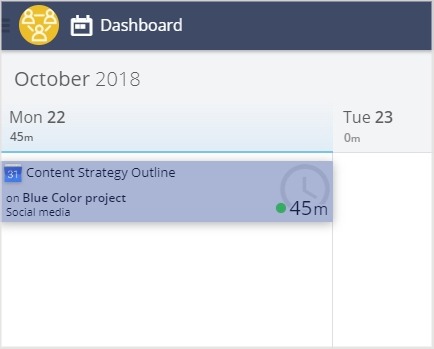Imagine a company spending 300,000 hours a year in pointless meetings. This shocking figure comes from a 2018 study on a large company’s executive meetings: most of those hours eventually proved to be wasted time.
Honestly, this comes as no surprise: meetings have been long identified as one of the biggest office time wasters, as well as one of the most dreaded activities by employees. Businesses have so much on their plates that the idea of spending time stuck in a conference room seem pointless.
Meetings aren’t inherently bad, though: they’re just usually badly managed. Here’s an easy-to-follow guide for making sure your time is productively used, with tips to follow before, during and after the meeting.
An easy-to-follow checklist for productive meetings
Before the meeting
Given that you already decided whether you should set the meeting or not, the preparation of the meeting is important to make sure nobody’s time is pointlessly wasted.
The things you should determine before are:
Purpose of the meeting
When the objectives are clear, it’s easier to stay on topic and achieve what you hope for within the time limit of the meeting (more about that later on). Decide exactly what the purpose is and make sure to share it with the other participants.
Date and time
Seems like a no-brainer, but you’d be surprised how many meetings are organized so vaguely people have no idea when to show up. So make sure to pick the right date, time of the day, and location. Obviously, the more people are attending, the higher is the risk of conflicting schedules. The time of the day matters, too, as you wouldn’t want to interrupt someone else’s work.
If it helps, a 2016 study determined that Tuesday at 2:30 pm is the best time to hold a meeting.
Participants
Who will attend the meeting? Too many brains are not always a guarantee of the best decision-making process. When you’ve decided who really needs to be there, make sure to invite them to the meeting at least some days before. Google Calendar is one of the easiest tools to do that, although there are other meeting scheduling tools available.
During the meeting
Set a time limit (and stick to it)
Early in my career, I once attended a meeting that went on (pointlessly) for four hours straight. I got out with a headache and an infinite list of to-dos which added to the already long list of existing tasks. That happened because we allowed the meeting to go out of scope and out of control, due to lots of decisions that shouldn’t have been taken there and then.
Establish a time limit and to make sure to respect it, track the time as the meeting goes using a time tracking tool, like Timeneye. By tracking your time, you’ll know exactly if meetings are draining too much of your productivity. Not to mention the fact that all of the time should be considered work and billed accordingly.
I personally find useful the Timeneye integration with Google Calendar. The integration syncs my calendar to the time tracking functions of Timeneye, and I can start a timer immediately when the meeting starts.

This leads us to the next point:
Start on time
There’s nothing worse than waiting for everybody to show up. Aim to start in time, or, even better, a few minutes early.
Stick to the agenda
Keep everybody focused on the to-dos for the meeting. You should have no more than 1-2 items on the agenda, to keep things brief and to the point.
Did you know that some companies go as far as banning laptops and smartphones from meetings rooms, to make sure nobody snoozes off? Although you don’t have necessarily to take discipline this far, try to establish rules for device use and limit distractions – while working on self-discipline, too.
Lead the meeting
Somebody should run the works to maximize engagement while making sure nobody oversteps or derails the meeting’s purpose. Establish who will lead the works – you, or else.
After the meeting:
Follow up immediately
When the meeting’s over and you have established the next steps, make sure to write a brief summary of the decisions made and the following steps. If possible, you should do it within the day, when everybody’s memory is still fresh and everybody’s still on the same page. Before the work proceeds any further, decide who’s going to take care of what before the next meeting.
Thanks for reading! Do you think meetings are a waste of time? Make sure to watch out for the other most common office time wasters, too.
Cover image by rawpixel on Unsplash